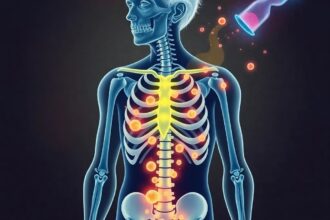Explore the science of photobiomodulation, a light therapy using red and near-infrared light to boost cellular repair and brain function, with practical tips for daily use.
Discover how photobiomodulation can enhance recovery and mental clarity through the power of red and near-infrared light therapy.
Introduction to Photobiomodulation
Photobiomodulation (PBM) is a form of light therapy that uses red and near-infrared light to stimulate cellular repair and improve brain function. This non-invasive treatment has gained attention for its potential to enhance recovery and mental clarity. According to a study published in the Journal of Biophotonics
, PBM works by enhancing mitochondrial function and reducing inflammation at the cellular level.
How Photobiomodulation Works
At the core of PBM is the interaction between light and cellular components. When red and near-infrared light penetrate the skin, they are absorbed by mitochondria, the energy-producing organelles within cells. This absorption stimulates the production of adenosine triphosphate (ATP), the energy currency of the cell, leading to enhanced cellular repair and function. Dr. Michael Hamblin, a leading researcher in the field, explains, PBM can significantly improve mitochondrial function, which is crucial for cellular health and overall well-being.
Practical Applications of Photobiomodulation
Incorporating PBM into daily life can be achieved through various methods. Light therapy devices, such as LED panels and wearable devices, are popular options. Spending time in natural sunlight, which contains a spectrum of light including red and near-infrared, can also provide benefits. A 2020 study in Frontiers in Neuroscience
highlighted that regular exposure to natural light can improve mood and cognitive function, particularly in individuals with seasonal affective disorder (SAD).
Benefits for Chronic Conditions
PBM has shown promise in managing chronic conditions such as pain, cognitive decline, and mood disorders. Research published in Pain Research and Management
indicates that PBM can reduce pain and inflammation in patients with chronic pain conditions. Additionally, a 2019 study in Neurophotonics
found that PBM can improve cognitive function in individuals with mild cognitive impairment, suggesting its potential as a therapeutic intervention for neurodegenerative diseases.
Scientific Validation and Future Directions
The effectiveness of PBM is supported by a growing body of scientific research. A meta-analysis published in Photomedicine and Laser Surgery
reviewed over 100 studies and concluded that PBM is a safe and effective treatment for a variety of conditions. As research continues, the potential applications of PBM are expanding, with ongoing studies exploring its use in wound healing, sports recovery, and mental health.
Conclusion
Photobiomodulation offers a promising approach to enhancing recovery and mental clarity through the power of light therapy. By understanding the science behind PBM and incorporating it into daily life, individuals can harness its potential to improve cellular health and overall well-being. As Dr. Hamblin aptly puts it, The future of PBM is bright, with endless possibilities for improving human health.




